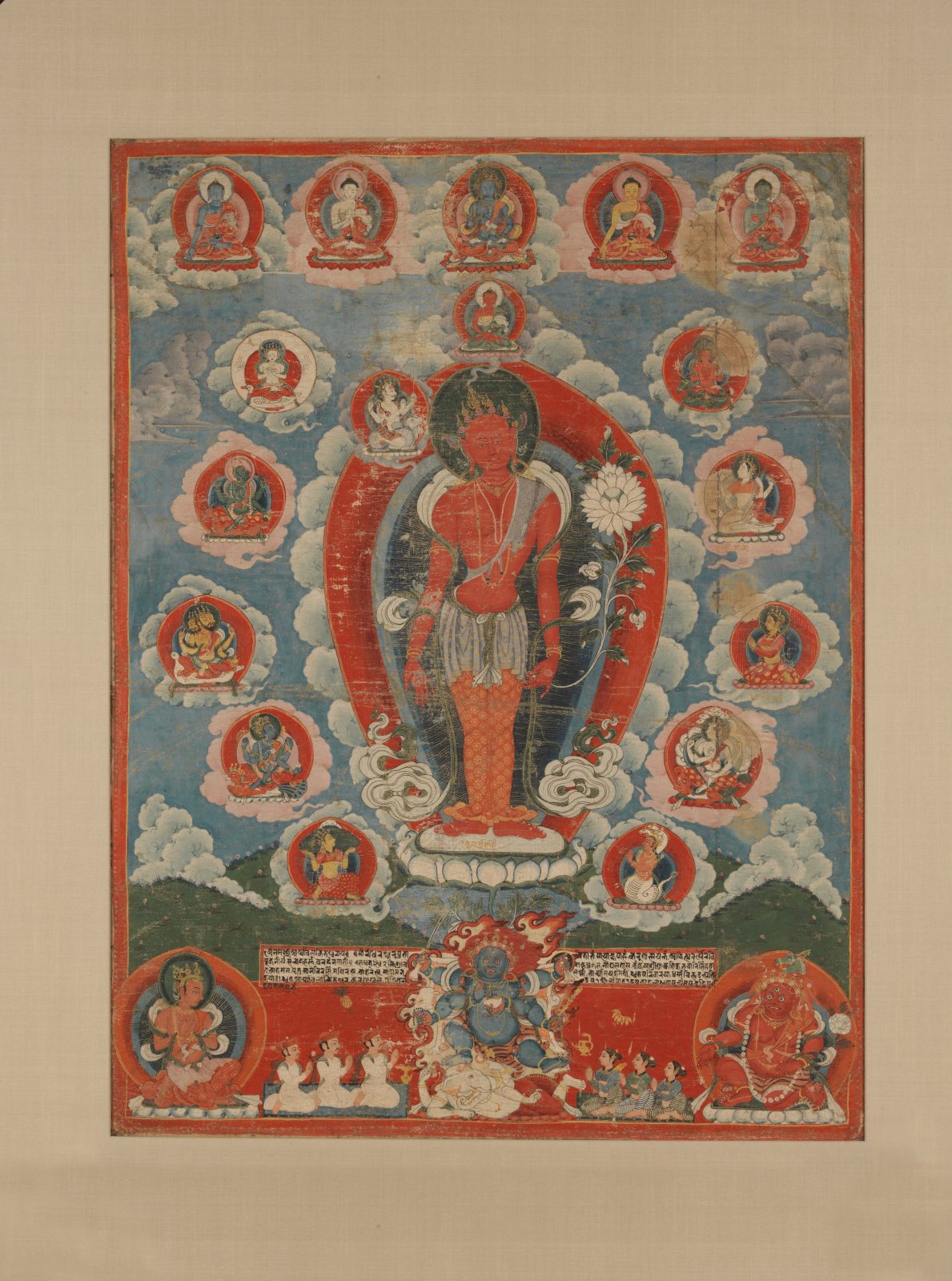

This week’s meditation session is led by Tracy Cochran and the theme is Beginning Again.

Red Avalokiteshvara, also known as Bunga Dya, and Macchendranath; Nepal; Dated by inscription 1842; Pigments on cloth; Rubin Museum of Himalayan Art, Gift of Shelley and Donald Rubin; C2006.66.45
Though traditionally Buddhists do not concern themselves with creation myths, this 19th-century painting from Nepal presents Avalokiteshvara, the bodhisattva of compassion, as the creator of the world. He stands surrounded by various Hindu deities as he assigns them to different tasks for maintaining the universe.
Along with being Avalokiteshvara, he is also Bunga Dya, a local deity associated with bringing the annual monsoons. Before the monsoons, Nepal becomes increasingly dry with the many plants withering away and animals hiding from the heat. Once the monsoon rains fall, everything comes back to life as it becomes time to plant rice for the fall’s harvest. Both the creation of the world and the monsoons serve as reminders that even though we may lose focus during meditation practice, we can always begin again.

Tracy Cochran has taught meditation and spiritual practice for many years. She is a speaker and author whose most recent book, Presence: The Art of Being At Home in Yourself, was published by Shambhala Publications in 2024. Tracy is the founder and leading teacher of the Hudson River Sangha and has taught mindfulness and mindful writing at New York Insight, the Rubin Museum of Himalayan Art, and many other venues. In addition to serving as the editorial director of the acclaimed spiritual quarterly Parabola, her writings have appeared in The New York Times, New York Magazine, Psychology Today, The Best Spiritual Writing series, Parabola, and many other publications and anthologies. For more about Tracy, please visit tracycochran.org and parabola.org.
Get the latest news and stories from the Rubin, plus occasional information on how to support our work.